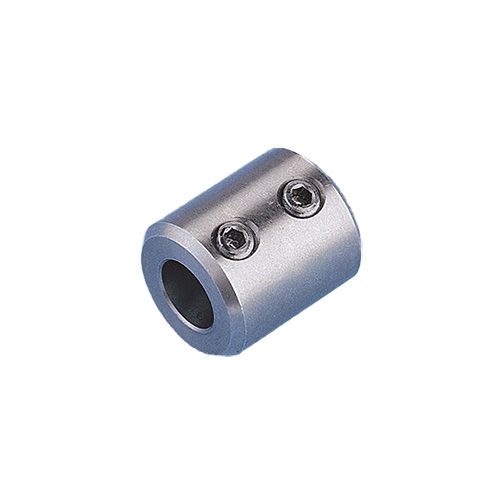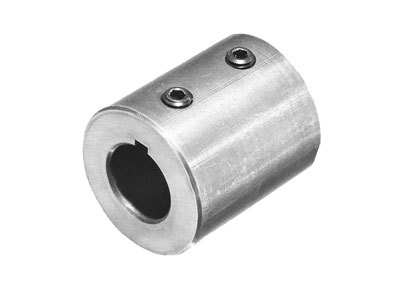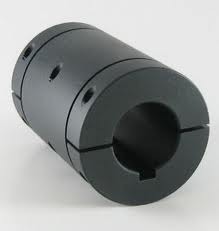Product Description
WELCOME TO SUIJIN
ABOUT US
HangZhou Suijin machinery Technology Co,.Ltd is a profational manufacturer in HangZhou city, our main process is investment casting/precision casting and machining, for casting process, we have 2 kinds of production line, 1 is precision casting, another is water glass with competitive cost.
Apart from the investment casting workshop and machine workshop, we also provide the CHINAMFG parts to meet the requirement for varial demand from our customer.
CERTIFICATIONS
Our company got the ISO9001 and IATF16949 certification, and aslo we are awarded the new high-tech enterprice by Chinese government, and we have more than 20 patent.
ADVANTAGES
• More than 10 years experience on casting and machining
• Advanced inspection equipment to ensure the tolerance
• Flexible PO QTY to meet customer demand
• Professional engineers in casting and machining
• Competitive price and exllent parts quality
• Nearby HangZhou port, on-time delivery
PROCESS FLOW
OEM&ODM SERVICE
HangZhou suijin machinery technology can provide the ODM&OEM service for customer, and main is ODM, we can manufacturing the customized parts according to 2D&3D, we have professional R&D team can take part in ealier development phase of the project.
AVALIABLE MATERIA & SURFACE TREATMENT
| Avaliable Material | |||
| Carbon Steel | Alloy Steel | High Chromium Cast Iron | Low carbon steel |
| Stainless Steel | Duplex Stainless Steel | Steel bar | Ductile Cast Iron |
| Surface treatment | |||
| Heat Treatment | Zinc Coating | Blackening | Mirror Polishing |
| Satin Polishing | Electrolytic Polishing | Shot Peening | DACROMET |
PRODUCT APPLICATION
AUTO PARTS
• Exhaust inlet/outlet cone • Shift sleeve • Fuel rail bracket
• Tempreture sensor boss • Mounting Brackets • Oxygen sensor boss
• Brake balance block • EGR sensor boss • Exhaust valve body
ARCHITECTURAL HARDWARE
• Mounting Base • Mounting plate • Bearing Covers
• Coupling • Grount sleeve • Sprockets
• Handle • law glass curtain wall accessories • Side Plates
AGRICULTURAL MACHINERY PARTS
• Tooth Blocks • Track shoes • Bucket Teeth
• Track Links • Clamping • Mounting Brackets
• Lifting Eyes • Quick Joint • Trencher Tooth
MARINE HARDWARE
• Star handle • Door hinge • Folding Dock Cleat
• Mirror Polished Mooring • Hollow base boat rope cleat • Mounting Brackets
VALAVE/PUMP
• Valve body • Explosion-proof valves • Pipe fitting
OTHERS
The casting part is wildly use in the industries, such as rail&transit parts, bicycle parts, casting impeller, food machine sorting components, solar mounting system parts, container safety parts, Electronic lock body, robot parts and so on, we have more than 20 patents related to this kinds of project in production.
ADVANCED EQUIPMENTS
Our company also equiped advance inspection equipment to meet the inspection requirement of the parts, so that we can sure the part can have a good quality.
MAIN EQUIPMENT LIST
| Magnetic defect inspection | Spectrometer | HB hardness inspection | Mechanical inspection |
| Ultrasonic defect inspection | Roughness tester | HR hardness inspection | CMM inspection |
| Metallographic detector | X-ray inspection | Dye penetrant inspection | 100% Thread inspection |
FAQ
| Q1 | Are you factory or trading company? |
| A1 | We are factory located in HangZhou city, China |
| Q2 | What kinds of language is avaliable? |
| A2 | English, Chinese, except email cummunication, we are ok with video meeting and calling. |
| Q3 | How should I place an order? |
| A3 | We are receive the PO and production drawing by email. |
| Q4 | Which shipping methed is ok for you? |
| A4 | Normally shipping by sea and train is use for mass production order delivery. DHL,TNT,FedEx, UPS,EMS air shipment is use for sample delivery. |
| Q5 | How can I contact you? |
| A5 | You can contact us by email, and also we can chat by Skype, Teams, WhatsApp, Facebook. |
| Q6 | What kinds of drawing format can be use? |
| A6 | PRO/E, Auto CAD, CHINAMFG Works, IGS, UG, CAD/CAM/CAE, STEP. |
| Q7 | Which packing material do you use for sea shipping? |
| A7 | For sea shipping, we will packaging with European standard wooden pallet. The parts will packing with PE bag inside the carton box. |
| Q8 | How do you deal with the RFQ? |
| A8 | Sales receiving the RFQ—Feasiblity study meeting with R&D engineer—Feed back technical issues with Customer—Sales quoted |
/* March 10, 2571 17:59:20 */!function(){function s(e,r){var a,o={};try{e&&e.split(“,”).forEach(function(e,t){e&&(a=e.match(/(.*?):(.*)$/))&&1

Can Sleeve Couplings Accommodate Axial and Angular Misalignments Simultaneously?
Yes, sleeve couplings are designed to accommodate both axial and angular misalignments simultaneously. They offer a certain degree of flexibility, allowing them to compensate for minor misalignments between the shafts they connect. Here’s how sleeve couplings handle axial and angular misalignments:
1. Axial Misalignment:
Axial misalignment refers to the misalignment that occurs along the axis of the connected shafts. In other words, one shaft is slightly offset from the other along their common centerline. Sleeve couplings can tolerate a small amount of axial misalignment because of their flexible nature.
When axial misalignment occurs, the sleeve coupling can flex along its length, allowing the shafts to remain connected despite the slight offset. The coupling’s flexibility prevents excessive stress on the connected machinery and helps maintain a smooth torque transmission.
2. Angular Misalignment:
Angular misalignment, on the other hand, occurs when the two shafts are not perfectly aligned in the same plane. Instead, they form an angle with each other. Sleeve couplings can also accommodate a certain amount of angular misalignment.
When angular misalignment is present, the sleeve coupling can bend and twist slightly to compensate for the angle between the shafts. This ability to flex and twist ensures that the coupling can transmit torque efficiently and reduces the risk of premature wear or damage to the system.
Simultaneous Axial and Angular Misalignment:
Sleeve couplings are well-suited to handle both axial and angular misalignments simultaneously. When a system experiences both types of misalignments, the sleeve coupling’s flexibility allows it to adjust and compensate for both the axial offset and angular deviation between the shafts.
It is important to note that while sleeve couplings can handle some misalignments, excessive misalignments should be avoided to prevent excessive wear and premature failure of the coupling. Regular inspections and maintenance can help ensure that the coupling operates within its designed misalignment limits and maintains optimal performance in the motion control system.
In summary, sleeve couplings can simultaneously accommodate both axial and angular misalignments to a certain extent due to their flexible and forgiving design. However, it is essential to ensure that the system is well-aligned and that the coupling is regularly inspected to ensure it functions correctly and provides reliable power transmission in various industrial applications.

What are the Standard Sizes and Dimensions Available for Sleeve Couplings?
Sleeve couplings are available in a wide range of standard sizes and dimensions to accommodate various shaft diameters and application requirements. The dimensions of sleeve couplings depend on factors such as the shaft size, coupling length, and overall design. Here are some common standard sizes and dimensions for sleeve couplings:
Shaft Sizes: Sleeve couplings are typically designed to fit specific shaft diameters, commonly ranging from a few millimeters to several inches. Standard sizes may include shaft diameters of 6 mm, 8 mm, 10 mm, 12 mm, 15 mm, 20 mm, 25 mm, 30 mm, 40 mm, 50 mm, and so on.
Coupling Length: The length of the coupling refers to the distance between the two ends that connect the shafts. The coupling length is usually determined by the application’s torque and space requirements.
Overall Diameter: The overall diameter of the sleeve coupling varies with the shaft size and coupling design. It is important to ensure that the overall diameter of the coupling fits within the available space and does not interfere with other components in the system.
Keyway Size: Some sleeve couplings feature keyways to provide additional torque transmission and anti-rotation capabilities. The keyway size should match the shaft’s keyway dimensions to ensure a secure connection.
Material Thickness: The thickness of the sleeve coupling’s material is critical for its strength and torque capacity. Standard sleeve couplings are available in various material thicknesses to suit different application requirements.
It’s important to note that while standard sizes and dimensions are readily available, custom sleeve couplings can also be designed and manufactured to meet specific application needs. Custom couplings may be required for non-standard shaft sizes, special torque capacities, or unique environmental conditions.
When selecting a sleeve coupling, engineers should consider the torque requirements, shaft sizes, space limitations, and environmental factors to ensure the coupling’s proper fit and reliable performance.

Key Design Considerations for Using Sleeve Couplings in Motion Control Systems
When incorporating sleeve couplings into motion control systems, several important design considerations should be taken into account to ensure optimal performance and reliability:
- Shaft Alignment: Proper shaft alignment is crucial for sleeve couplings to function effectively. Misalignment can lead to increased wear, vibration, and reduced efficiency. Ensuring the shafts are aligned within acceptable tolerances will maximize the coupling’s performance and lifespan.
- Torque and Speed Ratings: Evaluate the motion control system’s torque and speed requirements to select a sleeve coupling that can handle the specified loads. Overloading the coupling can cause premature failure and compromise system performance.
- Shaft Size and Fit: Ensure the sleeve coupling’s inner diameter matches the shafts’ outer diameter accurately. An improper fit may result in slippage or decreased torque transmission. The sleeve coupling’s size and fit should be carefully checked during installation.
- Environmental Conditions: Consider the operating environment’s temperature, humidity, and exposure to dust or corrosive substances. Choose a sleeve coupling material that can withstand these conditions and resist degradation over time.
- Dynamic Balance: Sleeve couplings should be dynamically balanced to minimize vibration during operation. Unbalanced couplings can lead to increased stress on connected equipment and may cause premature wear and failure.
- Operating Speed: Be mindful of the motion control system’s operating speed. At high speeds, centrifugal forces may come into play, affecting the coupling’s performance. In such cases, using a flanged sleeve coupling or other high-speed coupling types may be more suitable.
- Installation and Maintenance: Follow proper installation procedures to ensure the coupling is securely and accurately mounted on the shafts. Routine maintenance should also be performed to check for signs of wear, misalignment, or other issues that might affect the coupling’s performance.
- Resonance and Damping: Consider the system’s natural frequencies and possible resonance points. Sleeve couplings offer some vibration damping characteristics, but additional measures like tuning and damping elements may be required to avoid resonance issues.
- System Flexibility: Sleeve couplings offer flexibility to accommodate minor misalignments, but the system’s overall flexibility should be assessed to ensure the coupling’s compensation capabilities do not lead to excessive flexing or bending of other components.
By carefully addressing these design considerations, motion control systems can benefit from the advantages of sleeve couplings, such as simplicity, cost-effectiveness, and misalignment compensation. Ensuring proper selection, installation, and maintenance will contribute to smooth and efficient power transmission, leading to reliable and precise motion control performance.


editor by CX 2024-02-25
